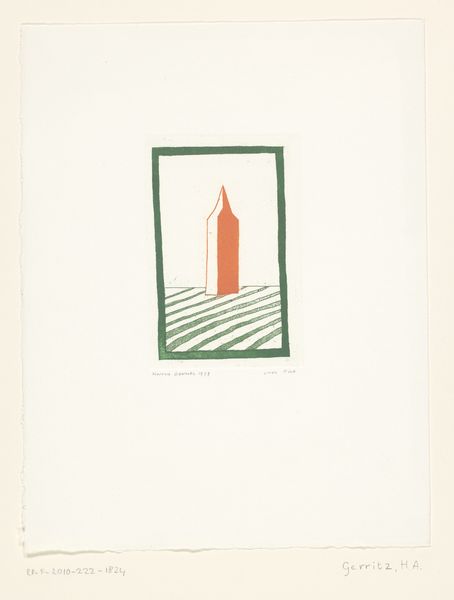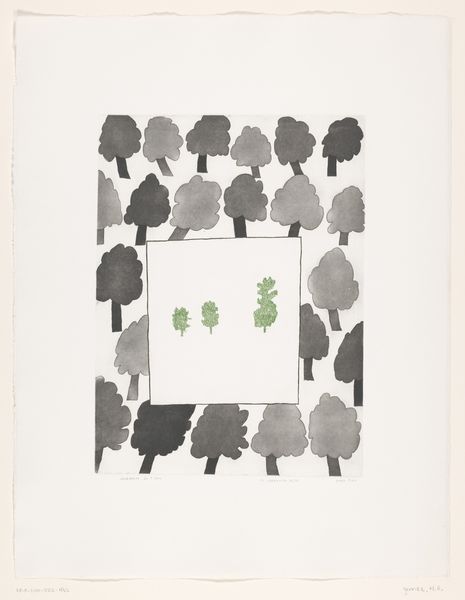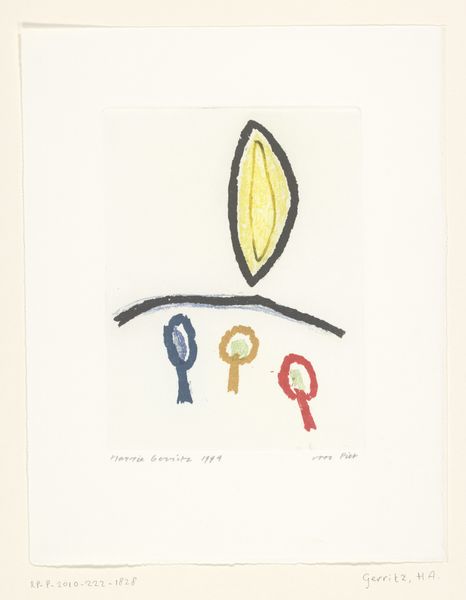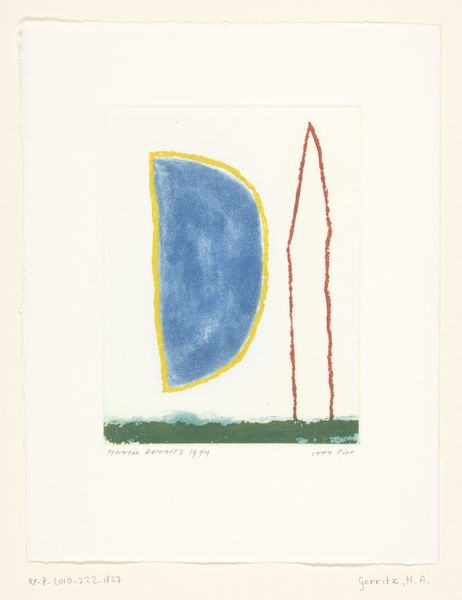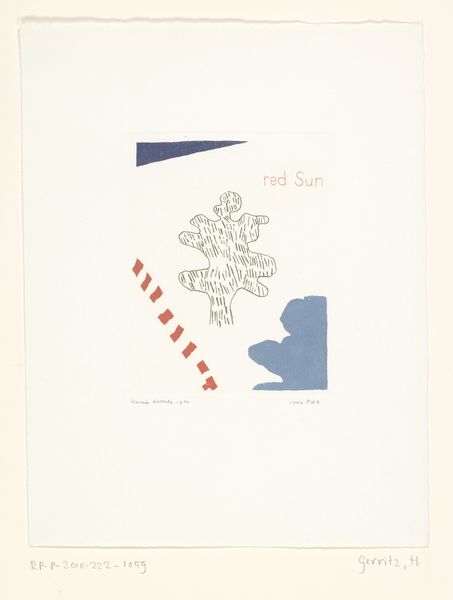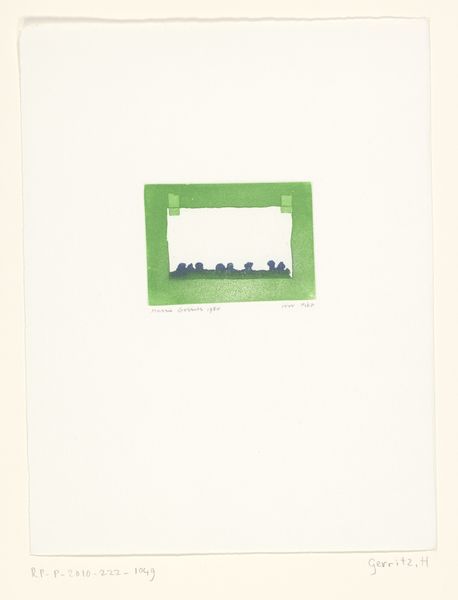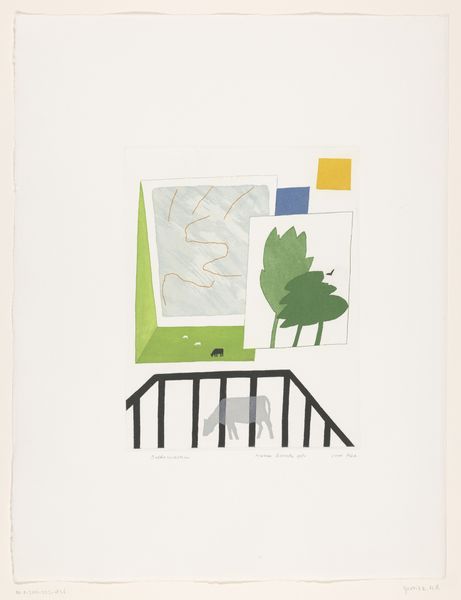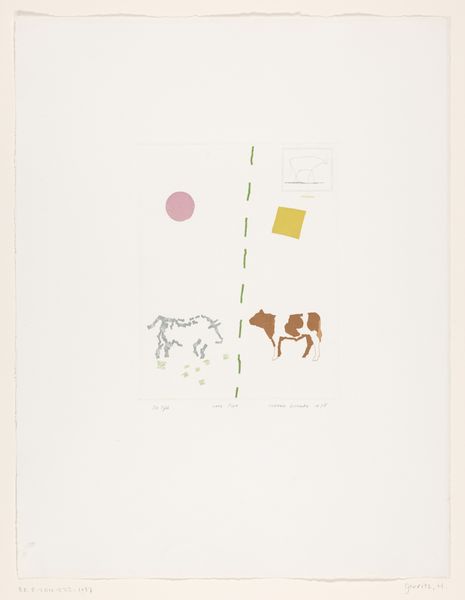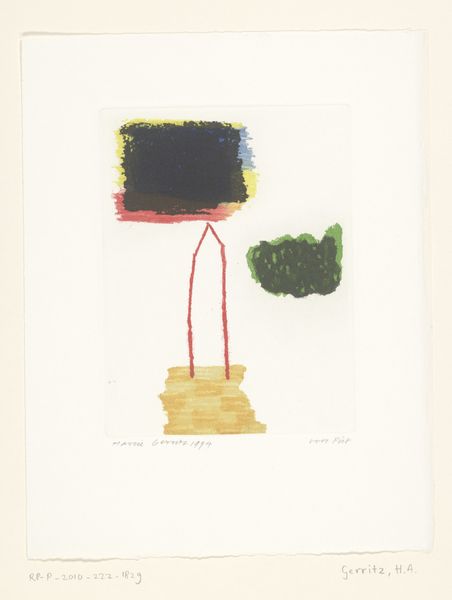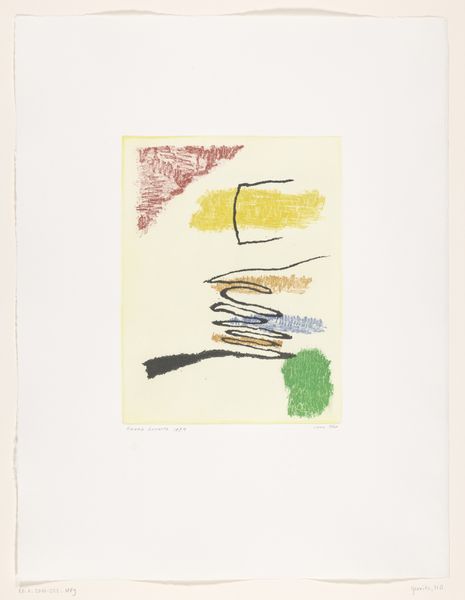
graphic-art, collage, print
#
graphic-art
#
collage
# print
#
geometric
#
abstraction
Dimensions: height 323 mm, width 254 mm, height 170 mm, width 127 mm
Copyright: Rijks Museum: Open Domain
Curator: This intriguing print, a collage in fact, is titled "L'amour" by Harrie A. Gerritz, created in 1979. It now resides here at the Rijksmuseum. Editor: The title promises so much, yet visually it’s such a sparse, almost childlike arrangement. The blotchy blue area at the top could be clouds. And those shapes… are they stylized trees? There’s a quietness, a gentle quality to its abstraction. Curator: Right, the simplicity invites us to look at the choices Gerritz made in the process. He combined printmaking, with its mechanical reproducibility, and collage, a technique associated with handcraft, chance, and everyday materials. What relationship do you see between those yellow squares, the trees, and, say, the meaning of "L'amour" here? Editor: Well, the yellow squares below, placed irregularly, disrupt any sense of orderly perspective, right? Below that, we find 'l'amour' inscribed – which creates some sort of visual poem. Love here seems disjointed. Maybe this speaks to the fragmented nature of relationships? Curator: The collage technique really reinforces that idea of fragmentation, as do the separate fields of color and distinct geometric shapes. The artist doesn’t blend or fuse the pieces together, it remains separate – it highlights the artificiality. Was the artist referencing advertising perhaps? Or an earlier modernist such as Matisse? Editor: That's a sharp point! The rough edges of the shapes indeed look like paper cutouts! The flat planes of color reduce the 'trees' to simplified icons, stripping away detail, maybe even exposing a sense of isolation. It's interesting that something labeled ‘amour’ utilizes such distancing imagery. Curator: Precisely, "L'amour" utilizes basic forms to subtly highlight how something we idealize can sometimes feel manufactured or mediated. Gerritz pushes us to consider not just what something *represents* but also how its very creation, its *making*, shapes meaning. Editor: I will never look at "L'amour" and the shapes around it the same way. Curator: A wonderful new appreciation.
Comments
No comments
Be the first to comment and join the conversation on the ultimate creative platform.
